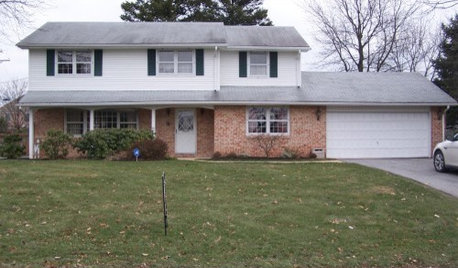Plumbing and Radiator Questions
old_home_lover
10 years ago
Featured Answer
Comments (10)
brickeyee
10 years agoazzalea
10 years agoRelated Professionals
Barrington Hills Kitchen & Bathroom Designers · Henderson Kitchen & Bathroom Designers · Owasso Kitchen & Bathroom Designers · Plymouth Kitchen & Bathroom Designers · Schaumburg Kitchen & Bathroom Designers · Apex Kitchen & Bathroom Remodelers · Brentwood Kitchen & Bathroom Remodelers · Ewa Beach Kitchen & Bathroom Remodelers · Portage Kitchen & Bathroom Remodelers · Southampton Kitchen & Bathroom Remodelers · Sweetwater Kitchen & Bathroom Remodelers · Warren Kitchen & Bathroom Remodelers · Wilson Kitchen & Bathroom Remodelers · Fort Lewis Architects & Building Designers · Los Alamitos Architects & Building Designersbrickeyee
10 years agoinox
10 years agoold_home_lover
10 years agoold_home_lover
10 years agoold_home_lover
10 years agosombreuil_mongrel
10 years agobrickeyee
10 years ago
Related Stories

KITCHEN DESIGN9 Questions to Ask When Planning a Kitchen Pantry
Avoid blunders and get the storage space and layout you need by asking these questions before you begin
Full Story
REMODELING GUIDESConsidering a Fixer-Upper? 15 Questions to Ask First
Learn about the hidden costs and treasures of older homes to avoid budget surprises and accidentally tossing valuable features
Full Story
REMODELING GUIDESSurvive Your Home Remodel: 11 Must-Ask Questions
Plan ahead to keep minor hassles from turning into major headaches during an extensive renovation
Full Story

MOST POPULAR8 Questions to Ask Yourself Before Meeting With Your Designer
Thinking in advance about how you use your space will get your first design consultation off to its best start
Full Story
WORKING WITH PROS10 Questions to Ask Potential Contractors
Ensure the right fit by interviewing general contractors about topics that go beyond the basics
Full Story
WORKING WITH PROS9 Questions to Ask a Home Remodeler Before You Meet
Save time and effort by ruling out deal breakers with your contractor before an in-person session
Full Story
DOORS5 Questions to Ask Before Installing a Barn Door
Find out whether that barn door you love is the right solution for your space
Full Story
MOVINGHiring a Home Inspector? Ask These 10 Questions
How to make sure the pro who performs your home inspection is properly qualified and insured, so you can protect your big investment
Full Story
SELLING YOUR HOUSE15 Questions to Ask When Interviewing a Real Estate Agent
Here’s what you should find out before selecting an agent to sell your home
Full StoryMore Discussions













old_home_loverOriginal Author